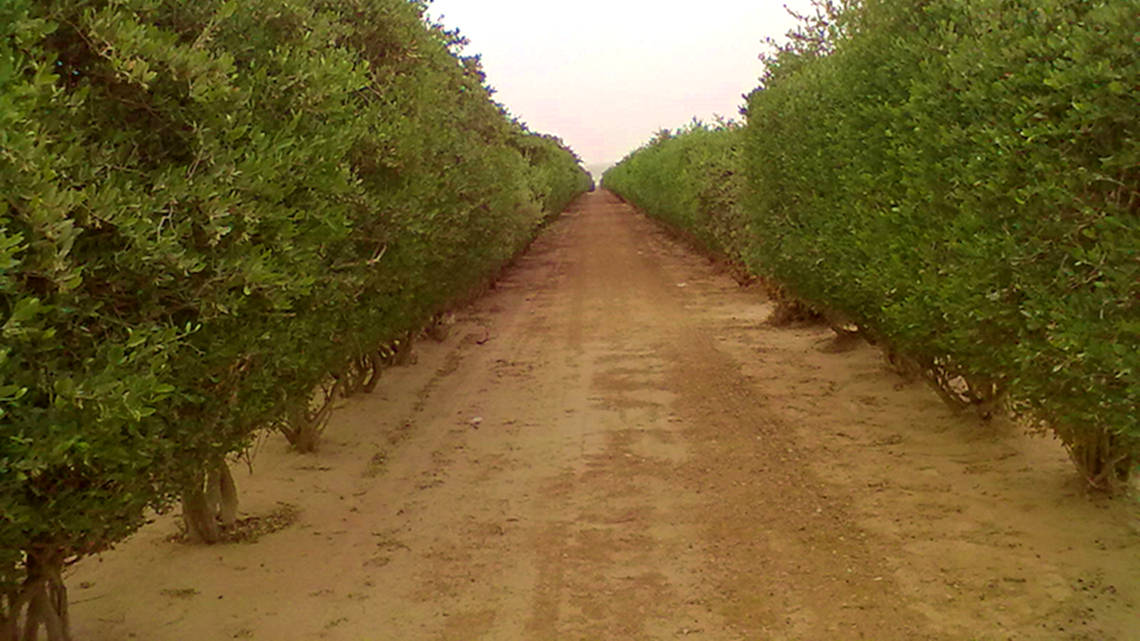Jojoba crops combat desertification
In the right places, jojoba plantations can influence the microclimate and increase precipitation, reveals a simulation by researchers at the University of Hohenheim.

They bring water into the desert: large plantations can influence the microclimate to such an extent that more rain falls. They help reduce desertification and remove carbon dioxide from the atmosphere. Scientists at the University of Hohenheim have now analyzed the exact mechanisms behind rain formation and, with the help of a supercomputer, have simulated it down to the regional level, where new crops could make the greatest difference.
Large plantations generate heat lows
"Large plantations, for example from jojoba plants, significantly increase the amount of solar energy that is absorbed by the earth's surface," explains earth system scientist Oliver Branch from the University of Hohenheim. "The plants then release most of the energy into the surrounding air in the form of heat." This creates a warm area with low air pressure, a so-called thermal low, above the plantation. "The pressure differences in the vicinity of the plantations create upwelling areas that can lead to the formation of clouds and rainfall," continues Branch.
Regional factors are crucial
According to the study published in the specialist journal "PNAS", important influencing factors are not only the season but also regional conditions, such as wind speeds and soil conditions. With the help of the Cray Supercomputer, the scientists were able to simulate where on earth the conditions for rain formation are particularly favorable. These include the Arabian Peninsula, Namibia and the Sahara. "Every desert is different," explains Branch. "While a plantation of 100 km by 100 km in Oman would make a big difference and produce clouds, we can rule out this effect in Israel, for example."
Jojoba bushes are ideally suited
The researchers recommend jojoba bushes for cultivation: "Since jojoba is a sturdy plant, it can also thrive in desert regions," explains Branch. "It requires very little water, which does not even have to be of drinking water quality. In addition, jojoba easily tolerates heat and perspires very little, making the thermal low effect particularly pronounced. Last but not least, the new crops bind carbon dioxide. "In this way, the plantations can contain the effects of the climate crisis while at the same time counteracting its further progression," sums up Branch.
Economic benefits for the population
Last but not least, jojoba crops are also economically interesting for the local population: "Jojoba, for example, can be used to produce a high-quality oil that is in high demand on the market," Branch says. In addition, the biomass could be used as a renewable raw material for energy production.
bl/um


